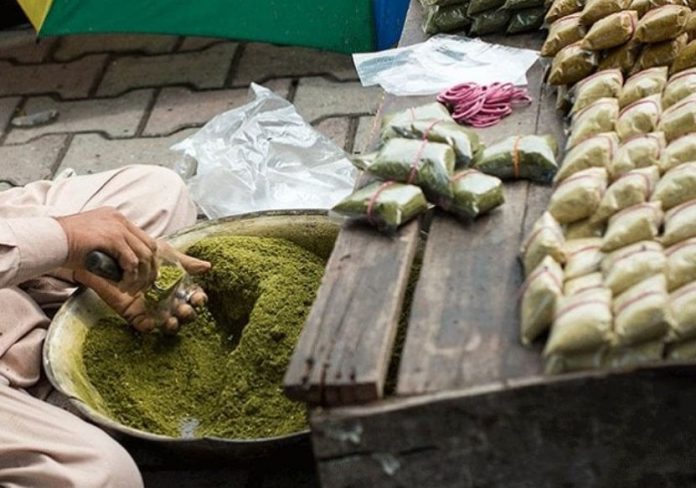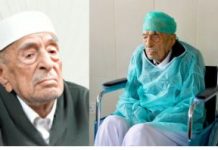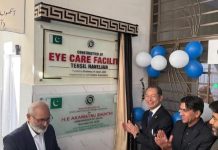By Fakhar-e-Alam
PESHAWAR, Aug 23 (APP): The rising prevalence of drug addiction, particularly hashish, ice, smoking, and naswar, in Khyber Pakhtunkhwa is increasingly affecting public health.
Many individuals suffering from drug addiction attribute their plight to socioeconomic issues such as poverty and unemployment, suggesting that improved economic policies and job opportunities for youth could address these challenges effectively.
One such case is Umar Khayam, a 30-year-old resident of the Nowshera district, who recently experienced severe dental pain due to his naswar addiction.
Umar, in excruciating agony, was rushed to a private dental hospital, where he was quickly transferred to the Oral and Maxillofacial department at Sardar Begium Dental College in Peshawar for emergency surgery.
Upon examination of his teeth, Dr. Tahir Khan, senior surgeon and principal of the hospital, found that Umar’s molar was severely decayed, leading to a critical gum infection.
The decay was attributed to years of naswar use. Due to the extent of the damage, the molar was extracted as root canal treatment was deemed unfeasible.
Dr. Tahir Khan noted that Umar began using naswar in 2010 while in a hostel, initially as a way to cope with the stress of his MA exams. Despite numerous attempts to quit, Umar has been unable to break free from the addiction, which has caused significant dental issues, including the loss of a tooth. He expressed frustration over the negative impact of naswar on his personal and professional life, including the unpleasant habit of spitting that affects his social image.
Dr Tahir Khan, said the severity of naswar addiction could result in severe gum infections, jaw complications, and the loss of multiple teeth.
“Naswar’s harmful effects extend beyond oral health, potentially causing bone loss, stomach disorders, and facial disfigurement. Additionally, it may contribute to increased heart rate with cardiac vascular complications, and in some cases can lead to more severe conditions like mouth and oral cancers.”
Referring to a report from the Global Cancer Observatory, Dr Tahir pointed out that Pakistan faces a significant burden of lip and oral cavity cancers, with about 11,000 new cases in males every year, making it the most common cancer among men.
“Poor dental hygiene, tobacco use, and viral infections besides fake quack doctors contribute to these alarming statistics,” he informed.
Approximately 10,000 people die of cancer of the lips and oral cavity annually in the country, the doctor said, adding the main reasons for such cancers were chewable and non-chewable tobacco and poor dental hygiene practices, oncogenic viral infections and genetic predispositions.
Despite grave health risks, he said that naswar remains prevalent in Khyber Pakhtunkhwa, where approximately 70 percent of the population uses it without knowing its serious consequences on their health.
Besides Charsadda, Swabi and Mohmand, the super quality naswar of Dera Ismail Khan, Bannu and Mardan were mostly exported to Punjab and Sindh provinces while its demand in Karachi was high due to presence of a large number of migrants from Khyber Pakhtunkhwa.
The history revealed that naswar was introduced to the world in 15th century in Europe when a French ambassador used it to treat her son’s migraines. Initially it was used for medicinal purposes but gradually it was consumed as an alternative to tobacco and later came to Indo-Pakistan subcontinent.
Zahurul Haq, who is associated with naswar business for the last 12 years said that people aging between 18-50 years prefer to consume Mardani, Charsadda and Bannu’s naswar. “The price of smoke-free tobacco varies in the open market as Rs30 per snuff packet was being charged per 100gram,” he said.
Regarding its preparation, he said that first tobacco was dried in the sun, then ground into powder and later water is added to this green powder along with calcium hydroxide and artificial colour, then plant ashes, species or oils are used to give a flavor and finally the mixture was rolled into fine balls to give it a proper shape.
He explained that there were two types of naswar, one is dried and other is moist, adding that people in the province mostly keep moist maswar inside the mouth under the lip and swallow the saliva as a craving while dried naswar is mainly inhaled through the nasal cavity.
Dr Sirzamin Khan, principal officer of government hospital Pabbi Nowshera said that naswar was mostly made of fresh tobacco leaves, calcium oxide, and other ingredients that may cause different types of cancers including lung, oral, stomach and mouth besides causing bronchitis, kidney, heart, and other diseases. He said the smokeless tobacco contains nicotine and other chemicals, which may have caused side effects on brain and ultimately oral cancer.
Syed Imran Shah, Director, Social Welfare Department said 12 detoxification and rehabilitation centres were established in different districts for the treatment and rehabilitation of drug addicts.
These centers were established at Peshawar, Mardan, Charsadda, Nowsehra, Swabi, DI Khan, Karak, Kohat, Malakanad, Swat, and Dir Lower. Under drugs-free Peshawar programs, he said addicts of Niswar were also rehabilitated.
Imran Shah underlined the need for mass awareness campaigns through electronic, print, and social media besides the active role of religious scholars and civil society to protect people from the hazardous effects of naswar.

















